GI Intervention
News


GI Intervention
News
David Atkinson, National Sales Manager
University Hospitals Dorset’s Hot Spaxus experience
There has been a great shift in the management of peri – pancreatic fluid collections after acute pancreatitis especially after the refinements in the definition of fluid collections based on the updated Atlanta classification consensus. Recently there is more emerging and supporting evidence of endoscopic ultrasound–guided drainage of pancreatic collections vs a surgical approach. It has become apparent that an endoscopic approach is not inferior to surgical drainage with lower complications and better quality of life compared with surgery. Anatomical location of peri-pancreatic collections can dictate which approach is suitable for drainage. An endoscopic approach is deemed more favourable in centrally located collections.
The first reported case of endoscopic treatment of peri –pancreatic fluid was reported in 1975. This was carried out by using a 22-gauge needle, thereafter many cases have been done in following years.
Endoscopic drainage of peri-pancreatic fluid can be as simple as aspiration to dryness to as far as fistulotomy, naso-cystic catheter drainage, necrosectomy, insertion of plastic pigtail stents or metallic stents and multiple gateway access techniques, as well as the development of EUS specific stent systems
Hot Spaxus is a novel luminal apposing metal stent which fits nicely in the choice of endoscopic ultra-sound guided peri- pancreatic fluid drainage and gallbladder drainage collection.
Hot Spaxus can be utilised for the following indications:
Pancreato-biliary indications
Other indications
The cost of HotSpaxus is very attractive when compared with similar stents in the market. The delivery system of the stent is easy and the learning curve is steep and quick.
The Hot Spaxus stent is well visualised on sonographic views and equably visible on fluoroscopy captured images which makes stent deployment safer and increase its success rates.
Variable diameter of the Hot Spaxus stent allows its use in various indications, e.g. bigger diameter stents are very helpful in draining necrotic pancreatic collections
Tips and tricks
Visual guidance on the coloured markings (blue and yellow) on the stent can be very helpful during stent deployment however this can be difficult in case of poor luminal insufflation.
Prior full deployment of the luminal flange (proximal); ideally a cone shaped appearance of the distal flange (cyst side) should be achieved on EUS views prior full deployment to avoid gastric wall deployment.
The use of JAG wire is essential in maintaining access to the collection throughout the procedure. Fluid puncture and stent deployment can be done without the use of JAG wire but this runs the risk of losing access and misses deployment of the Hot Spaxus stent
The absence of retrieval thread can make stent re positioning is difficult in case of miss deployment.
Results to date
Seven cases of peri- pancreatic collection drained using a Hot Spaxus stent, 6 of which were walled off necrosis and one case was a pseudo-cyst. These procedures were done on two sites (RBCH and Poole hospital)
The technical success was 100% for all cases and this was defined by adequate stent position on EUS and fluoroscopic views with immediate drainage achieved. One case had gastric wall stent deployment but this was rectified by dilating the fistula tract and repositioning the stent using a stent grabber.
No intra procedural complications or delayed complications in all patients. No immediate or delayed haemorrhage noted. No mortality recorded within 30 days from the procedure date.
Radiologically all patients had significant reduction in their collection size on follow up imaging.
We envisage more use of the Hot Spaxus stent for peri –pancreatic collections (pseudo-cysts and walled off necrosis). We are highly considering the use of Hot Spaxus for gallbladder pathology (obstructed GB).
We are very keen to trial Hot Spaxus in creating enteric anastomosis but this ideally should be done in a research project as more data is required prior to adapting this in our routine clinical practice.
 Dr Ghassan El Sayed. MUDR MRCP SCE ESEGH
Dr Ghassan El Sayed. MUDR MRCP SCE ESEGH
Consultant Physician & Gastroenterologist
Novel oesophageal stent to reduce migration - Double Oesophageal Stent
The ONLY fully covered stent with an uncovered outer sleeve to reduce migration, prevent tumour ingrowth and reduce the need for reintervention.
Watch the video to learn more about the Double Oesophageal Stent here.
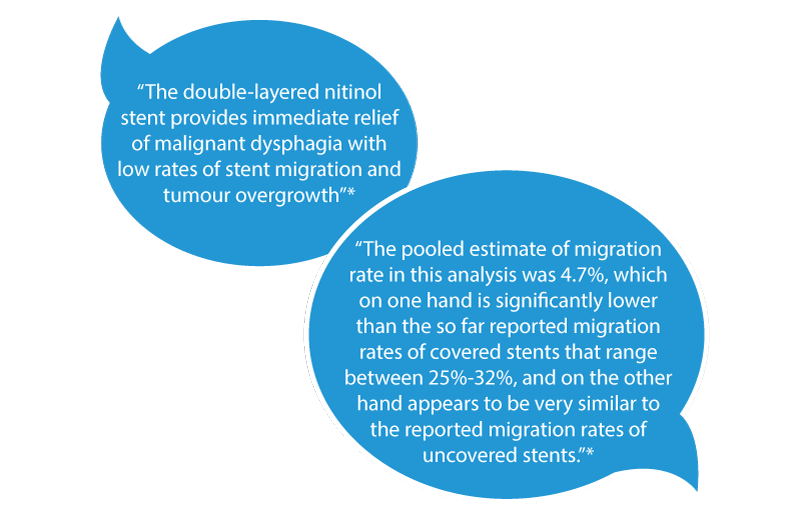
 Karen Chilcott,
Karen Chilcott,
Senior Territory Manager.
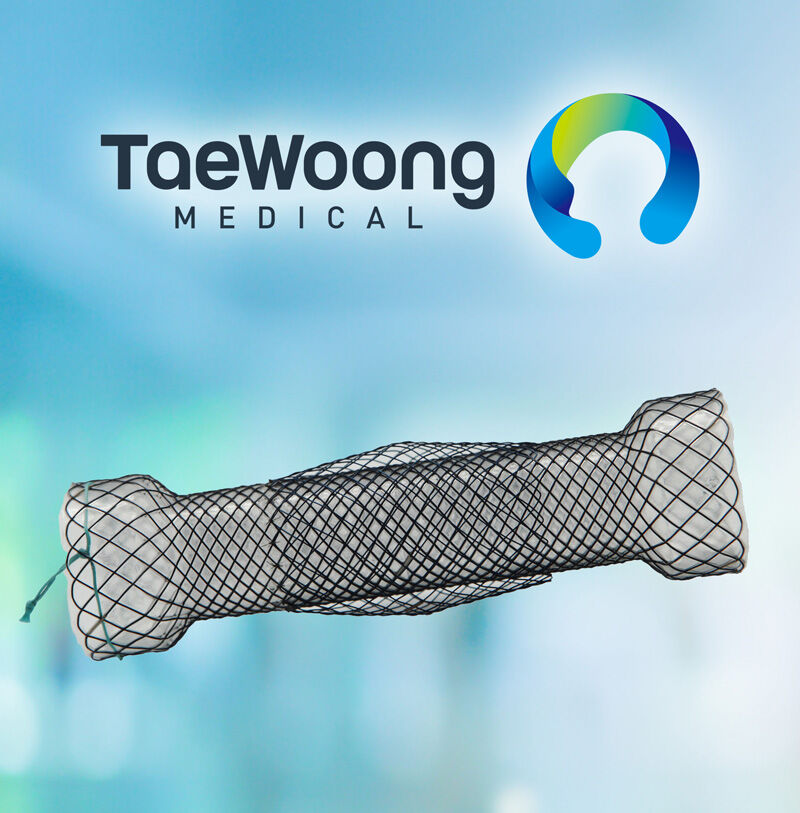
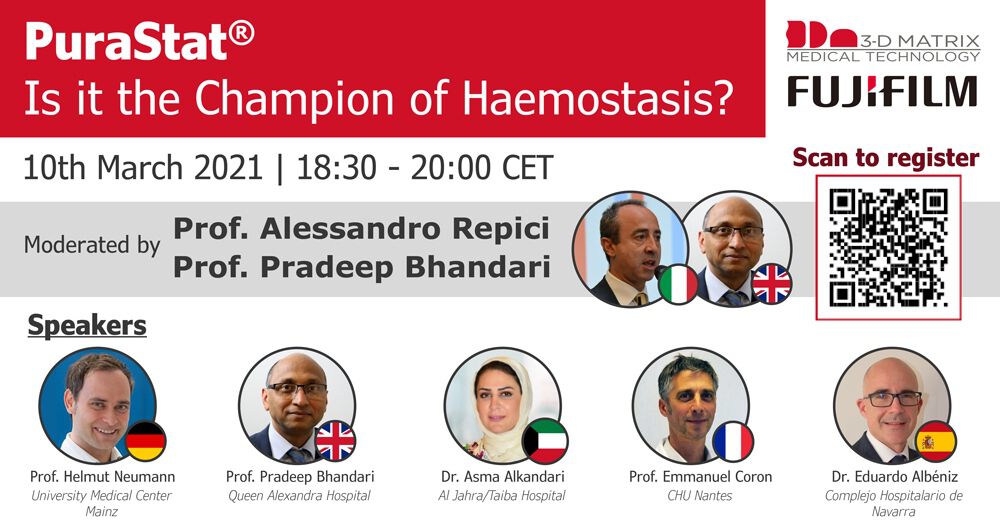

PuraStat®: Is it the champion of haemostasis?
On Wednesday the 10th March 3-D Matrix hosted a virtual symposium ‘PuraStat®: Is it the Champion of Haemostasis?’.
The session explored how Purastat is becoming a necessary tool in endoscopy rooms all over the world due to its versatile nature and applicability in a number of GI indications. Current licensing has seen PuraStat become widely adopted to treat intraprocedural and delayed bleeding for resections in the GI tract; however doctors across the globe are now finding new and innovative ways in which this miracle product can be applied.
Our panel was moderated by Professors Pradeep Bhandari and Alessandro Repici and included a host of expert speakers including; Professor Helmut Neumann, Dr Sharmilla Subramaniam, Dr Asma Alkandari, Professor Emmanuel Coron and Dr Eduardo Albéniz.
The evening’s talks focused on how PuraStat is becoming a preferred complimentary tool to traditional haemostatic methods such as clips or electro cautery. We were shown fantastic case videos of PuraStat’s use in POEM, EMR, ESD, GAVE, Radiation proctitis and ERCP. Many of users feel that PuraStat’s clear gel and easy application make it the perfect haemostatic tool for endoscopic therapy, it can reach difficult areas, cover large resections and offers no risk of perforation.
‘With endoscopists constantly pushing the boundaries of complex procedures it is important that they have the tools to support them. PuraStat is showing time and again it can offer quick, clear and effective haemostasis and is now going even further in complex indications such as radiation proctitis. I genuinely believe every endoscopist could benefit from having this tool in their endoscopy room’.
To watch this PuraStat symposium please Click Here.
 Andrew Orrock, Regional Sales Manager – UK and Northern Europe, 3-D Matrix
Andrew Orrock, Regional Sales Manager – UK and Northern Europe, 3-D Matrix
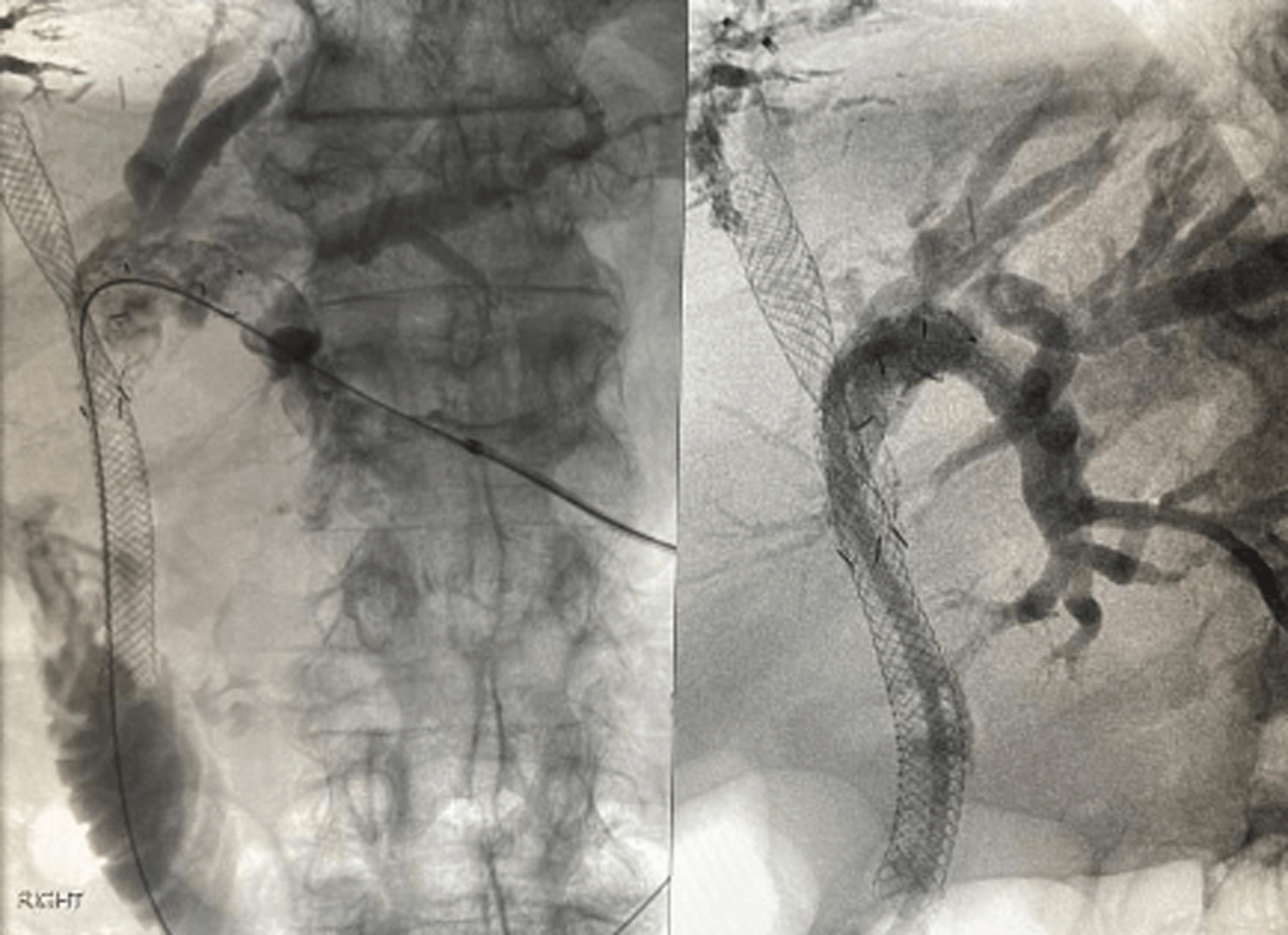
Combined ELRA case with Endoscopy and Interventional Radiology
The Endoscopy Department at Princess Royal University Hospital/King’s College Hospital Foundation Trust carried out one of our first ERCP and RFA cases using the ELRA radiofrequency ablation system from TaeWoong Medical for a patient with tumour ingrowth and overgrowth diagnosed with Inoperable Hilar Cholangiocarcinoma and metal stents in situ.
This was a joint procedure with IR colleagues starting with an endoscopic 4-ring 18mm ELRA probe, used for three intra-stent ablations to treat tumour ingrowth inside one of the TaeWoong Medical LCD biliary stents imbricated with another stent at the hilum. This was followed by percutaneous access through a 7Fr sheath with a 4-ring 33mm short shaft ELRA probe for two more ablations. This combined approach led to a successful result for the patient as demonstrated in the fluoroscopy images.
 Dr. Mayur Kumar. FRCP
Dr. Mayur Kumar. FRCP
Princess Royal University Hospital/King’s College Hospital Foundation Trust
Taewoong launch their Online Training Centre
Taewoong Medical are pleased to announce the opening of their online training centre (OTC). This platform has been designed to offer users across the globe the skills and expertise of using Taewoong products. The free to access platform contains a variety of content, in the form of articles, video tutorials, online events showing live cases and more, all designed to give the user confidence in the Taewoong portfolio. Taewoong offers a large range of products designed to give the specialist a choice for their procedure, and this is reflected in the content offered on the platform.
Last month saw a number of informative online events from Taewoong, such as the treatment of benign biliary and post anastomotic strictures, and the management of leaks and fistulas after bariatric surgery. For those that missed the events, the OTC platform offers the chance to watch these back.
To take a look around the OTC visit www.taewoongotc.com and register your details.
 Ehsan Hussain,
Ehsan Hussain,
Territory Manager.
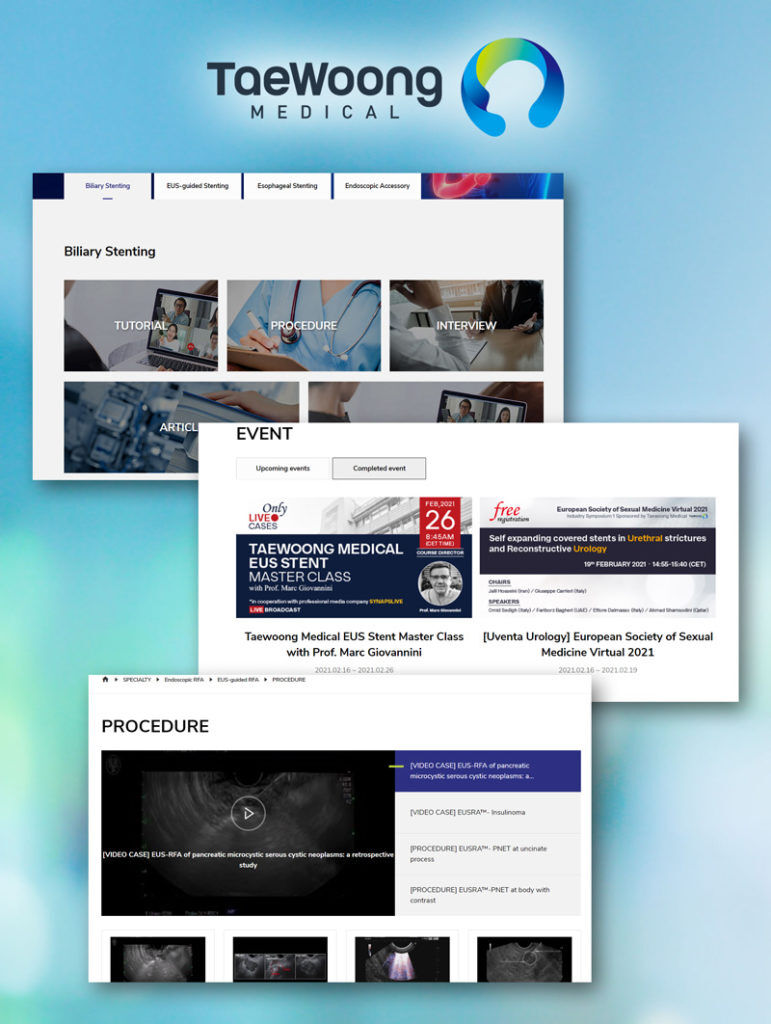
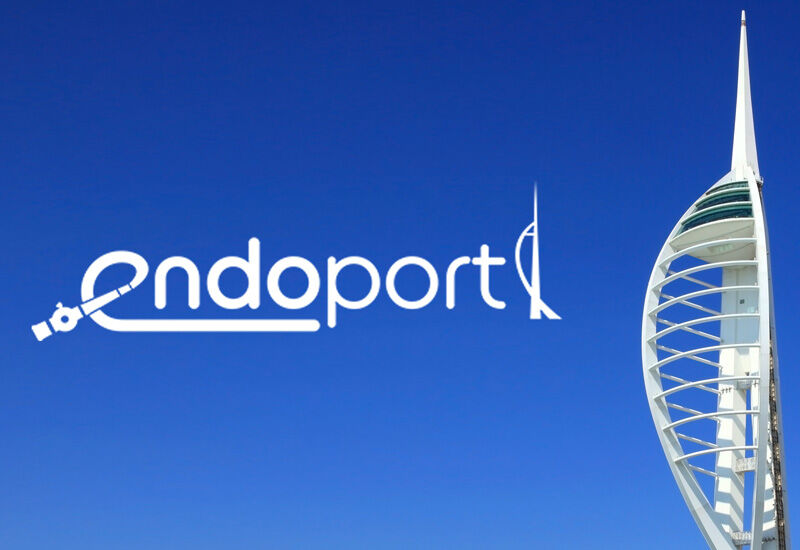
Endoport 2021
We always look forward to Endoport and this year was no exception. Endoport 2021 hosted by Professor Bhandari and colleagues at Portsmouth featured experts in the field of Endoscopy from the UK and International Hospitals alike.
There were some excellent sessions on AI Endoscopy, Upper GI / Colorectal MDTs and GI Bleed Management. We were delighted to see Professor Repici’s presentation during the Haemostasis workshop in which he detailed how Purastat has been used in his practice during COVID and the versatility of the product in GI bleeds. The Advances in HPB Endoscopy section had a fantastic UK faculty too with some excellent talks.
It is always of interest for us to see current practice and what the future holds in Interventional ERCP and EUS with Cholangioscopy, lumen apposing stenting and EUS guided ERCP becoming ever more present. We look forward to Endoport 2022!

Alexandra Jackson,
Territory Manager
Upcoming Events
Contact the Team






I am text block. Click edit button to change this text. Lorem ipsum dolor sit amet, consectetur adipiscing elit. Ut elit tellus, luctus nec ullamcorper mattis, pulvinar dapibus leo.